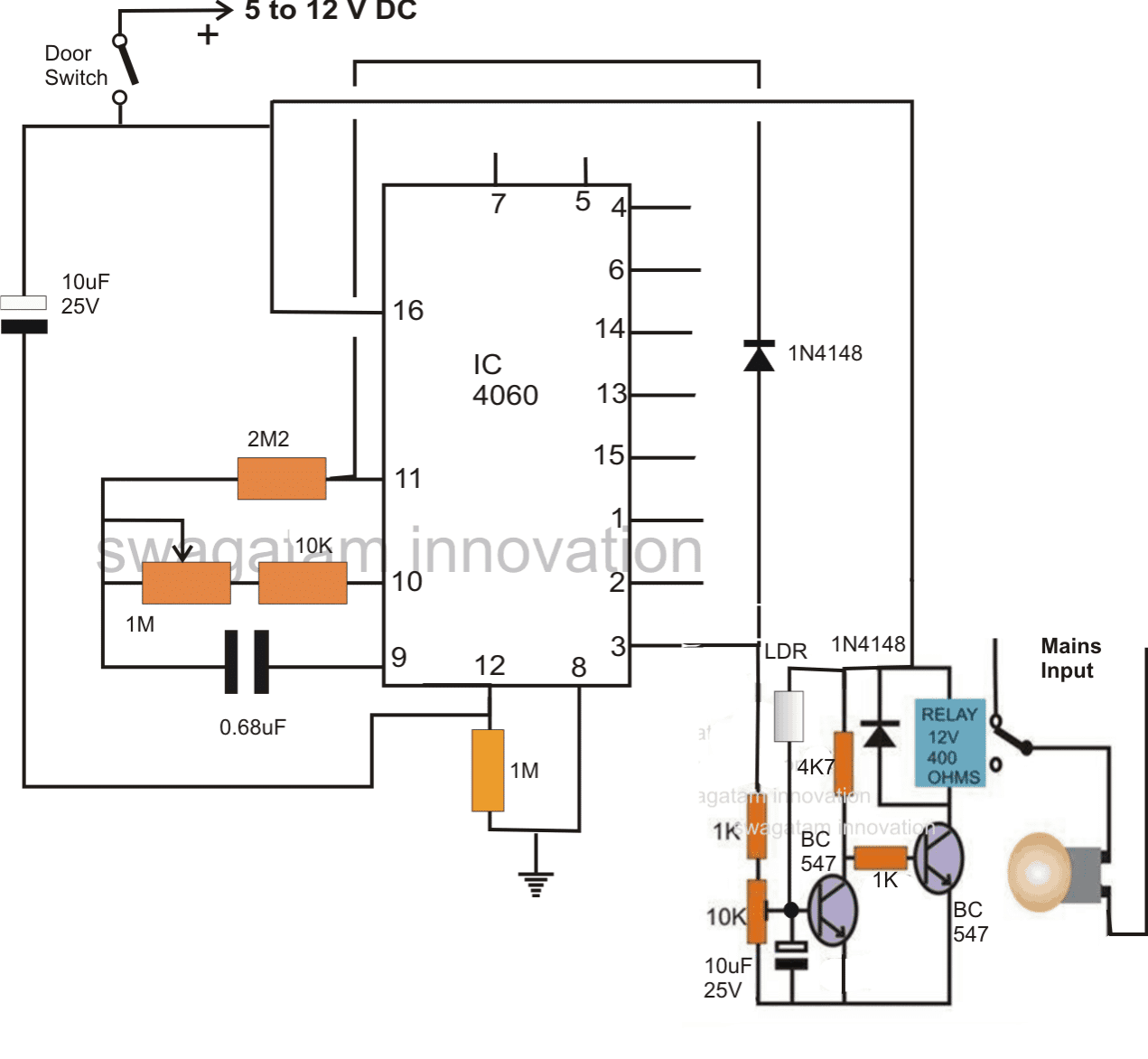In this article I have explained a simple automatic door light timer circuit which activates every time the door is opened, and switches OFF after a predetermined time if the door is kept open for too long. The circuit was requested by one of the avid readers of this blog, Mr. Juan. I have explained more.
Technical Specifications:
I always find your blog very interesting.
I want to know if this would be possible
I have a cabinet in with I put a magnetic switch with normally closed and normally open contacts. (today, I only use one of them)
Today, when you open the door, the light that is on top turns on
I would change the circuit so that:
1. Open the door once so the circuit is ON, after a given time, the light turns off (although the door hasn't been closed and is opened). If I ever want to turn on the light, I have to close the door and reopen it.
2. add a LDR to turn on the light ONLY if there isn't sunlight in the room. With LDR in series with the load is enough?
The system is 12V. Should I use the famous 555? (all I've seen is with tiggers (push buttons), which is not my case)
Thank you.
The Design
Instead of 555 IC, a 4060 IC has been used here due to it's better accuracy.
The IC 4060 is configured in its standard delay timer mode, where the 1M pot and 0.68uF decides the length of the time delay.
The door switch is set in such a way that it closes when the door opens.
The 10uF capactor at the supply resets pin#16 so that the timer initiates the counting process from zero.
During this period pin#3 stays at logic zero, keeping the first BC547 switched off, which in turn switches ON the relay driver and the lamp.
If the door stays open until the timer delay lapses, pin#3 goes high switching ON the first BC547 and consequently switching OFF the relay driver and the lamp.
Also, at the same time the positive from pin#3 reaches pin#11 of the IC via the connected 1N4148 diode which latches the entire circuit.
This renders the lamp permanently ON,
In order to switch OFF the lamp, the door will need to be closed now.
An LDR at the base of the first transistor makes sure that this transistor switches ON when there's ample ambient light.
In the above situation the relay driver transistor is held switched OFF, which in turn keeps the lamp switched OFF.


Time Delay Formula
For calculating the output time delay, you can use the following formula:
f(osc) = 1 / 2.3 x Rt x Ct
2.3 is a constant term here.
The oscillator will work with proper results only when the part values are selected as per the following conditions:
Rt << R2 and R2 x C2 << Rt x Ct.
Need Help? Please Leave a Comment! We value your input—Kindly keep it relevant to the above topic!